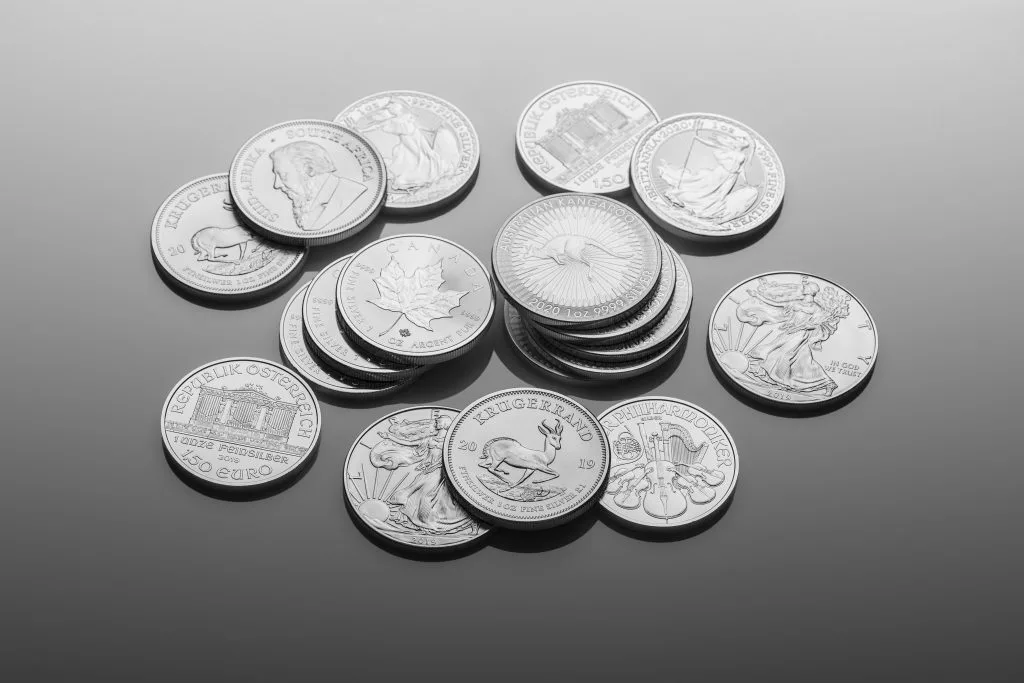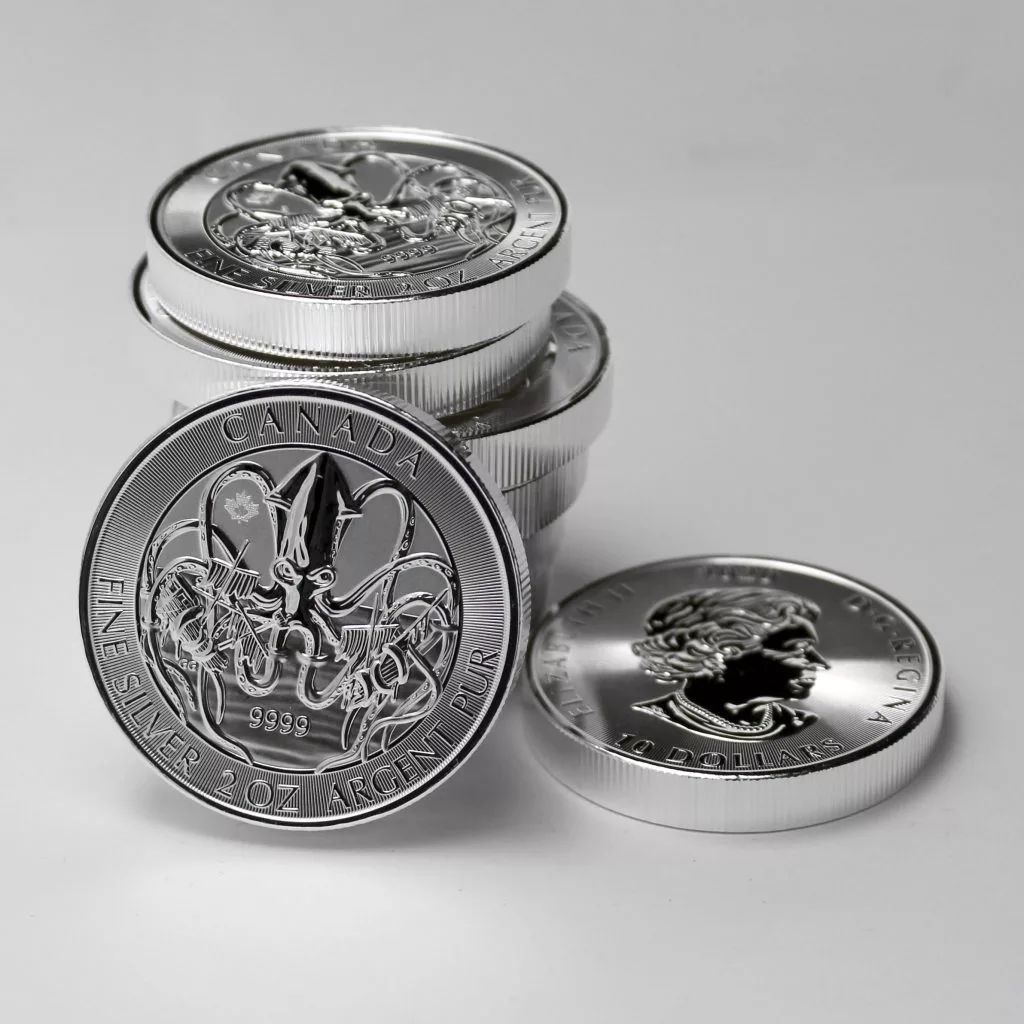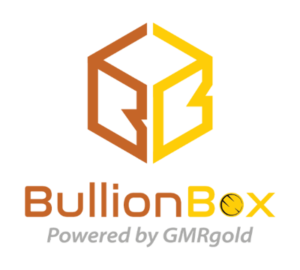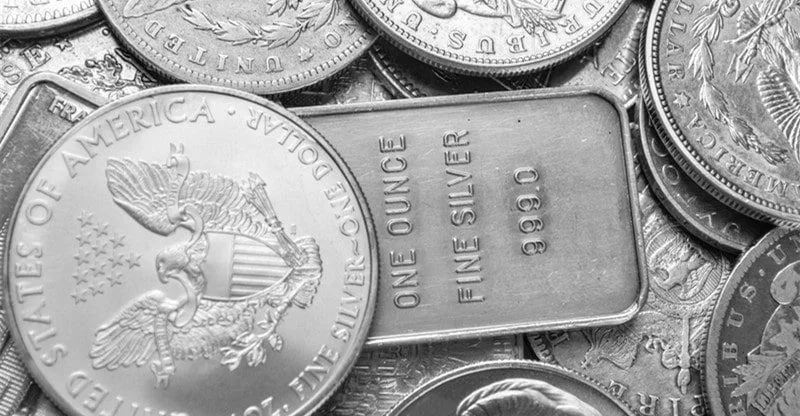Suppose you’re asked the question “what would you like to invest in, silver rounds or silver coins?”
You’ve probably come across silver coins and silver rounds when you first started investing in precious metals. Many people mistakenly believe they are the same thing because they appear so similar—but this couldn’t be farther from the truth!
In this article, you will learn about:
- Definition of silver coins and silver rounds
- What are their differences
- What are their pros and cons
- Which of the two should you invest in
Let’s get started!
Silver Coins and Silver Rounds
Silver rounds and silver coins are really very different from one another, and these differences have an influence on the coin’s value as well as its investment potential.
What Are Silver Coins?
A Silver Coin signifies that, in addition to the value obtained from its precious metal composition, the coin has been assigned a monetary value by an official global government. Some coins have what is known as numismatic value, which refers to their collectability.

For example, the worth of a coin might surpass its monetary value as well as its precious metals content if it is ancient, unique, in excellent shape, or has a low production number (mintage).
The government mints silver coins that may be used as cash. Coins will also always have a mint date and denomination, as well as the government’s guarantee of silver purity.
Coins have a face value or denomination, which signifies they are legal tender. So, coins are considered money.
What Are Silver Rounds?
A silver round is just a chunk of silver that has been shaped into a round shape. These, like a bar, have no numismatic value and are not created by or for the government.

Manufacturers often develop rounds that mimic the designs of previous and contemporary coins only for aesthetic reasons.
These are low-cost alternatives to purchasing silver coins, and they, like silver bars, are a great choice for those who are just interested in gaining as much weight as possible.
Rounds are not legal tender, and are generally made by private manufacturers.
What Is The Difference Between A Silver Coin And A Silver Round?
Aside from their definition, these two kinds of silver have a lot of differences. Let’s take a look at 6 of them and discuss each.
-
Value
Silver round values are solely determined by the current market price of silver. The value of silver coins, on the other hand, takes into account the coin’s rarity as well as its condition.
Certain silver coins, particularly those that are very ancient and rare, may be valued much more than the price of silver.
The 1794 Flowing Hair Silver Dollar may be the most costly coin ever sold, at least for the time being. Some analysts think it was the first silver dollar issued by the United States Mint.
The front depicts Lady Liberty with flowing hair, while the reverse depicts an American eagle.
Fewer than 1,800 of these coins were ever made, and one expert estimates that the surviving coins number between 120 and 130, making them very uncommon. In 2013, the coin was auctioned off for little more than $10 million.
Wow! A coin for over $10 million? That’s insane!
-
Denomination
Because silver coins have monetary worth, the denomination amount is always written on the front of the coin. Silver rounds have no monetary value; their worth is determined only by the current value of silver. It is unlawful to have a denomination printed on silver rounds.
-
Mint
Silver rounds may be manufactured at any private mint, but silver coins must be created in a government-run mint. When determining if a coin is pure silver, this difference is significant.
Among the government mints that make current silver coins are:
- United States Mint
- Austrian Mint
- Chinese Mint
- Great Britain Mint
- Canadian Mint
- New Zealand Mint
- Mexican Mint
- Somali Mint
Government-minted coins are guaranteed to have a particular silver quality and amount, while private mints are not, even though their silver quality and quantity are likely to be just as excellent!
-
Size and Weight
Silver rounds and coins are comparable in size and shape—both are disc-shaped and have a thin height. Silver rounds, on the other hand, cannot have the exact size and weight as any silver coin.
-
Purpose
Silver coins serve as a kind of money. Of course, coins may also be used as collectibles and bullion, which is why many investors purchase silver coins as part of their investment portfolio.
Silver rounds, on the other hand, are often designed to honor an event, person, or location. There are silver coins commemorating the Olympics, Walt Disney, and the American Liberty Bell. You may probably find a silver round to match any significant event or location in your life!
-
Purity
No, this has nothing to do with “cleanliness” or the like.
In traditional finance, coin purity refers to a coin’s physical content. Coins (such as cents, pennies, and dollars) are composed of certain metals or precious metals. Gold coins, for example, are graded based on their purity in relation to the karat, fineness, and impurity allocation.
Both silver rounds and coins are made of silver, but the quantity of pure silver in coins is guaranteed by the government, so you will always know how much silver is in the coin. The quality of a silver round will be determined by the private mint’s dependability and reputation; yet, it will almost certainly be pure.
Pros and Cons
It is necessary to distinguish between rounds and coins for practical reasons. Although they are comparable, there is enough difference between these two types of silver bullion to produce trade-offs.
Silver Coins Are Popular
Silver coins are popular among investors as well as coin collectors. In other words, bullion coin investors appreciate silver coins, as do people who aren’t so concerned with generating money and instead enjoy the pastime of coin collecting. Morgan silver dollars, Peace silver dollars, and Walking Liberty half dollars are among the most popular silver coins in the United States.
Silver Rounds Have A Lot Of Available Designs
There are numerous fascinating coins out there for almost every aesthetic taste — but I’d argue that the world’s silver rounds have a larger range of designs and art themes.
Here are a few examples of design themes found on silver rounds:
- Silver American Eagles
- Silver Canadian Maple Leaf
- APMEX 1oz Fine Silver Rounds
- Morgan Silver Dollars
- Austrian Silver Philharmonics
Silver Is A Practical Investment Precious Metal
Be it rounds or coins, silver is a good entry-level investment metal since it is less costly than gold, platinum, or palladium and can be readily acquired and traded.
Investing in silver bullion coins is a simple way to get started in metal trading, and American silver eagle coins are among the most popular bullion coins for sale.
Which Should I Buy?
Making the “correct” choice may be subjective and dependent on the interests and aspirations of each individual investor. There is no conclusive answer as to which is the superior option. To diversify, investors often pick a combination of both.
However, there are significant distinctions to consider while weighing your choices. Coins are appealing to two markets: investors and collectors. Coins’ collectability value may also rise: search for low-mintage or rare coins. Rounds, on the other hand, are simpler to store and more cheap; you may obtain more silver for a lower fixed charge.
Whether you purchase silver bullion, silver coins, or a combination of the two, investing in silver is a sensible and cost-effective way to diversify your portfolio and build financial stability.
BullionBox has everything you need whether you want to acquire 100 percent real silver rounds or coins, or if you want to learn more about investing in precious metals. Visit our website for additional information and choices for purchasing gold and silver coins online.

 with 700+ reviews
with 700+ reviews




